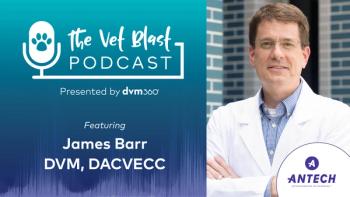
Just Ask the Expert: Finding the best contrast medium and other esophagography tips
Our newest expert Dr. Tasha Axam delivers her thoughts on esophageal imaging.
Dr. Axam welcomes imaging questions from veterinarians and veterinary technicians.
Years ago, I used a pasty barium product during radiographic examinations to better define the esophagus compared with liquid barium or barium and food. I am unable to locate such a product now. Can you comment on using such a product and whether it is still available?
Dr. Tasha M. Axam
A. Multiple contrast media are used to perform esophagography in veterinary patients. To do a complete static esophageal evaluation with contrast, three types of contrast media are used—liquid barium, barium paste or cream, and a barium food mixture. Determining which product to use will depend on the suspected disease. I always use at least two of these methods when evaluating the esophagus. The most common combination to evaluate the esophagus is liquid barium and a barium food mixture. This combination allows you to evaluate liquid transit, food transit, regional motility, foreign bodies, masses, strictures, diverticula, and the size of the esophagus.
PASTE VS. LIQUID
The product you used in the past is a barium paste. A barium paste or cream called E-Z-Paste, or Intropaste (Nanric), is available. If you suspect an esophageal mucosal irregularity, a foreign body, a mass, or a stricture, barium cream or paste is the contrast medium of choice because it is formulated to adhere to the mucosal lining and is more radiopaque than barium liquid, giving better visualization of the abnormality. However, if the patient is vomiting or if you are concerned about aspiration, avoid a barium paste and use liquid barium, as the paste carries with it a risk of asphyxiation if aspirated. Since liquid barium is safer if aspiration occurs, it is used more frequently because a large number of these patients have clinical signs of regurgitation or vomition. Liquid barium does not adhere well to the mucosal lining, but it will flow around esophageal obstructions, unlike barium paste or cream.
IONIC VS. NONIONIC IODINE
If you suspect a fistula or an esophageal tear, an aqueous iodine solution is indicated. Liquid barium, on the other hand, can cause a granulomatous reaction if it comes in contact with the pleura and should be avoided if esophageal perforation is suspected. Ionic (hypertonic) and nonionic (isotonic) aqueous iodine solutions are available. Ionic contrast agents (i.e. Conray [Mallinckrodt], Hypaque [Amersham Health], Renografin [Bracco Diagnostics], MD 76 [Mallinckrodt]) can cause pulmonary edema if aspirated. Nonionic contrast agents (i.e. Omnipaque [GE Healthcare], Isovue [Bracco Diagnostics]) will decrease this risk and are recommended.
OBTAINING THE IMAGES
Use static esophagography to evaluate for esophageal foreign bodies, strictures, masses, perforations, diverticula, and motility disorders. When performing static esophagography, always obtain survey radiographs, including a right lateral and ventrodorsal (VD) or dorsoventral (DV) view, before contrast administration. On the ventrodorsal image, the esophagus will be superimposed over the spine, so to evaluate the esophagus, 15- to 30-degree oblique ventrodorsal radiographs can be obtained. The survey radiographs should include a lateral image of the cervical soft tissues and lateral and VD or DV images of the thorax to include the entire length of the esophagus.
Give a bolus of contrast medium orally (5 to 20 ml) with the patient in right lateral recumbency on the x-ray table. Obtain multiple static lateral images of the cervical soft tissues and lateral, VD or DV, and VD oblique images of the thorax during the swallowing period and during the pause after the patient finishes swallowing. Repeat contrast bolus administration and radiographs as needed.
Dynamic esophagography, which is beyond the scope of this answer, is performed with fluoroscopy and is commonly used to evaluate cricopharyngeal and esophageal function.
Tasha M. Axam, DVM, DACVR
Saint Francis Veterinary Specialists
625 Dekalb Industrial Way, Suite 500
Decatur, GA 30033
Newsletter
From exam room tips to practice management insights, get trusted veterinary news delivered straight to your inbox—subscribe to dvm360.






